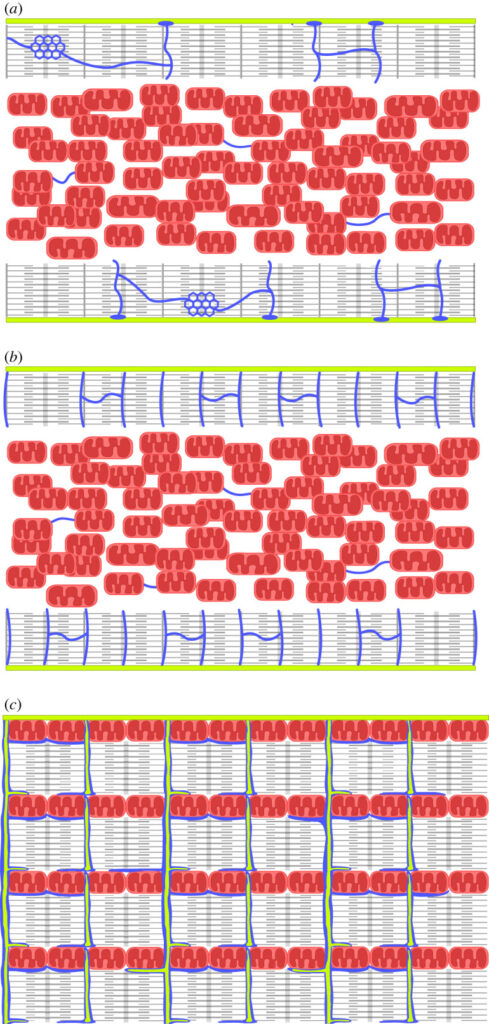Rikke Birkedal, Martin Laasmaa, Jelena Branovets, Marko Vendelin
Philos Trans R Soc Lond B Biol Sci. 2022 Nov 21;377(1864):20210321.
- PMID: 36189816
- DOI: 10.1098/rstb.2021.0321
Abstract

The ontogeny of the heart describes its development from the fetal to the adult stage. In newborn mammals, blood pressure and thus cardiac performance are relatively low. The cardiomyocytes are thin, and with a central core of mitochondria surrounded by a ring of myofilaments, while the sarcoplasmic reticulum (SR) is sparse. During development, as blood pressure and performance increase, the cardiomyocytes become more packed with structures involved in excitation-contraction (e-c) coupling (SR and myofilaments) and the generation of ATP (mitochondria) to fuel the contraction. In parallel, the e-c coupling relies increasingly on calcium fluxes through the SR, while metabolism relies increasingly on fatty acid oxidation. The development of transverse tubules and SR brings channels and transporters interacting via calcium closer to each other and is crucial for e-c coupling. However, for energy transfer, it may seem counterintuitive that the increased structural density restricts the overall ATP/ADP diffusion. In this review, we discuss how this is because of the organization of all these structures forming modules. Although the overall diffusion across modules is more restricted, the energy transfer within modules is fast. A few studies suggest that in failing hearts this modular design is disrupted, and this may compromise intracellular energy transfer. This article is part of the theme issue ‘The cardiomyocyte: new revelations on the interplay between architecture and function in growth, health, and disease’.
Keywords: cardiomyocytes; energy transfer; excitation–contraction coupling; heart; intracellular diffusion; ontogeny.